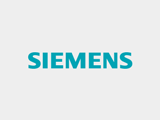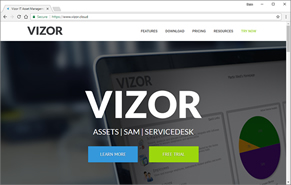You are here :
- Home
- Technical Information
- Great Plains Integration
Great Plains / Microsoft Dynamics Integration with Issue Tracker
Reducing costs through innovation in business process automation and management is high on the agenda for many organizations. The ability to reference Great Plains data dynamically from within Issue Tracker is a great example of technology that enables this class of innovation. With this easy to configure functionality, Vector Networks has enabled organizations to:
- centralize information access in one system – speeding up reference times and productivity, reducing the response time to the customer and improving customer satisfaction
- extend their use of BPA/BPM concepts with efficient, cross-department workflows
- monitor the performance of these workflows using Issue Tracker's SLA support
- track progress of dynamic entities and of activities such as Return Merchandise Authorizations
The ability to integrate with Microsoft Dynamics GP, known also as Great Plains, enables customers to further leverage their investments in Great Plains through extending their business process automation. It is typical of Vector's commitment to the continuous extension of the flexibility and power of Issue Tracker and the value it creates for its users.
The addition of Great Plains integration involves two key changes. First, customers and contacts can be imported in Issue Tracker using the existing Import Users tool. Second, Great Plains items such as purchase orders, invoices, and inventory data can be accessed and referenced in real-time from within the Issue Tracker Web interface.
Importing Great Plains / Microsoft Dynamics Customers and Contacts
Issue Tracker's Import Users tool has been upgraded to allow importing from a Great Plains database. Specifically, the organization's customers and contacts can be imported as contacts, companies, or users. The user option allows you to select a default password, which can speed up the process of getting the organization's customers up-and-running in Issue Tracker. Specifically, this can give customers access to the Issue Tracker system without having to create additional accounts. Customers themselves can then log into the system to check up on their own purchase orders, parts, and support issues – all based on Great Plains data.
Since these changes simply enhance the Import Users tool, the existing scheduling functionality built into the tool can be utilized as well – enabling organizations to automatically synchronize the Great Plains database with the Issue Tracker database, on a regular schedule.
Importing the contacts into Issue Tracker introduces certain particularly interesting possibilities. For one, the contacts can be associated to Service Level Agreements. The SLA functionality can then be exploited in numerous ways, for example, it can be configured to send e-mails automatically to the contact whenever any form of agreement term is due for renewal.
Real-Time Access to Great Plains Data
With access to the Great Plains database, issues can reference Great Plain-specific data like purchase orders, invoices, and inventory information. So entities in Great Plain can be tracked using all the issue management functionality already present in Issue Tracker.
Similarly, support representatives can have greater visibility of customer service terms, which can help in the identification of valid customers. Sales representatives can also be granted similar rights, granting them the ability to look into any customer's recent history, bringing them up-to-date prior to contacting a customer. This can help the representatives tailor their approach to better suit the client, potentially leading to more sales.
The centralization of the information is also an important factor; by making Great Plains data accessible using one system, productivity and response times will undoubtedly improve. It is also worth noting that the possibility of error is decreased as Issue Tracker references the Great Plains database in real-time, showing only valid options, rather than relying on manual input.
The Self-Service system could also be configured to consult the Great Plains data whenever a customer tries to log in, and then utilize the state of the customer's account to determine whether to allow or deny access.
Return Merchandise Authorization
Issue Tracker offers a simple way to create and track Return Merchandise Authorizations (RMA) tickets – customers can easily submit them from the web, using data stored in Great Plains. Once in ticket form, Issue Tracker features can be exploited – for example, an automatic e-mail notification can be sent out whenever RMA parts are received, or sent. The involvement of other departments could also be tracked - the ticket would simply be updated whenever the associated part is moved to another department. Using such an approach, Issue Tracker could also be used to identify parts that fail repeatedly.
Further Information and Resources
- Request an evaluation of Vector solutions
- View on-line screenshot galleries.
- For a no-obligation review of your business needs and Vector's solutions family, call now on +1 770-622-2850.
- Evaluate now
- Screenshot gallery
Service Management - Free Trial
- Schedule Demonstration
- Join the newsletter













